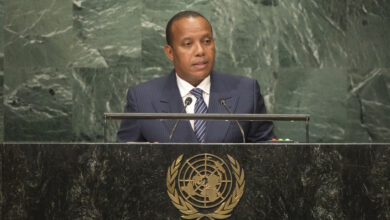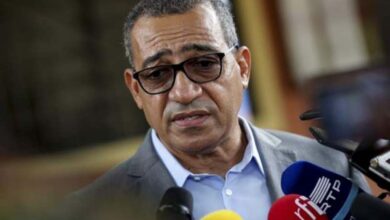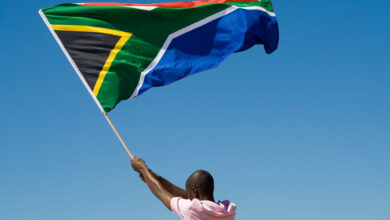São Tomé and Príncipe
Sao Tome and Principe, in long form the democratic republic of Sao Tome and Principe , is one of the smallest countries in Africa, which occupies an archipelago of the South Atlantic located in the Gulf of Guinea, 239 km (São Tomé) from the coasts of Gabon and 216 km (Principe) from Equatorial Guinea. It is made up of two main islands, São Tomé and Principe, lying between the two Equatorial Guinean islands of Annobón and Bioko. The entire territory covers an area of approximately 1,000 km2. The volcanic relief rises to more than 2,000 m, the climate is of the equatorial type. Agriculture – and in particular the production of cocoa – retains an important place, but the expected exploitation of hydrocarbons and the tourist potential have raised great hopes in a poor country, which remains largely dependent on international aid. Sao Tome and Principe is a former colony of Portugal, independent since 1975, and its official language is Portuguese.
São Tomé and Príncipe ‘s history
The island of São Tomé, then uninhabited, was discovered on Saint Thomas day, December 21, 1471, by the Portuguese navigators João de Santarém and Pedro Escobar. The slave trade laboratory During the 15th century, Portuguese colonists came to settle there, in particular new Christians, driven out by the Inquisition, having in sight the kingdom of Kongo, accessible in six days on the Atlantic coasts further south. The first contacts with Nzinga Nkuwu, the sovereign of this kingdom having taken place peacefully, the Portuguese will gradually set up diplomatic and commercial exchanges tripartites implying the kingdom of Kongo, São Tomé and Elmina in Gold Coast (current Ghana ), country of the Akan people. Manufactured products (fabrics, glassware, alcohol, firearms, etc.) from Porto or Lisbon were exchanged for slaves from distant lands or defeated kingdoms. The latter were then transported via São Tomé to Elmina and bartered for gold to be used as labor in the precious metal mines. These are the beginnings of triangular trade.
To clear and develop the rich volcanic lands of the island of Sao Tome, with the cultivation of sugar cane, the Portuguese will bring en masse from the coasts of the kingdom of Kongo, nearly 4,000 captives per year. The island of São Tomé will thus be the scene of the first most profitable experiment in history in the tropics, namely the plantation of sugar cane. The settlers did not pay, dress, house, or feed these slaves who worked more than 14 hours a day. These slaves did it themselves on the lush island. This laboratory also instituted the tense relations between masters and black populations initially free, but reduced in captivity. These under the effect of demography will largely become in surplus on the island and revolt by forming resistance organizations called “Mocambo”. To counter this numerical superiority, the Portuguese will encourage crossings between white men with black women to give birth to the Forros (or Filhos da terra), by instilling in them European values, so that they defend the interests of the white population. It should also be remembered that this crossbreeding is often the result of a relationship of domination, violence, rape between masters and slaves. The Filhos da terra, mulattos, new commercial elite, began to raid the populations of the Kongo Kingdom, including nobles from the royal lineage, in order to satisfy the explosion in demand for slaves, which caused disarray of Alphonse I of Kongo. The latter wrote to King John III of Portugal, to denounce the abuses of the slave trade, a vain attempt because the slave trade was henceforth essential to the colonial economy.
With the discovery of Brazil by Pedro Alvares Cabral on April 23, 1500, barter will turn into triangular trade and take on an unexpected dimension. Although always having as primary objective, the quest for gold, the Portuguese now believe that the slave trade, the cultivation of sugar cane or spices can validly replace it. From 1516, in order to provide the labor to cultivate the vast spaces of the new continent, the Portuguese based in São Tomé, will become the essential intermediaries in the supply of slaves to the African kingdoms and their routing towards Brazil and the Caribbean, with a stopover in the Santomean islands. The slave trade will thus become the primary source of enrichment for the Portuguese crown and elites. In 1595, a captive born on the island, named Amador and self-proclaimed “king of São Tomé”, took the head of an insurrection of slaves and set fire to the island. The sons of the earth only succeed in quelling the revolt after a year. The instigator Amador was hanged in 1596 in the public square. The Santomean experience having shown its limits, the Portuguese decide to transfer their proven model, on the other side of the Atlantic by dismantling the mills, the sugar factories and the ovens to rebuild them in Brazil, without forgetting the slaves who hold the agricultural know-how, thus leaving the island to itself. In 1620, Portugal was the undisputed master of world trade by its mastery of the sea through caravels, and the slave trade. He has already deported more than 300,000 captives and is quickly imitated by other European countries (England, Holland, Spain, France, etc).
Post-slavery period In 1876 slavery was abolished on the archipelago. The development of the archipelago was very slow during the colonial period: in the aftermath of the Second World War, no secondary school had yet been opened. The archipelago acquired its independence on July 12, 1975 after the signing of an agreement in Algiers, with President Manuel Pinto da Costa who then installed a single party Marxist regime. In 1990, the multiparty system was restored and the country opened up to democracy. Despite attempted coup, the democratic regime remains in place and experiences political alternations.
São Tomé and Príncipe ‘s politics
Under the Constitution of September 10, 1990, São Tomé and Principe constitutes a democratic and pluralist parliamentary republic. Since the 1991 legislative elections, the country has seen many alternations between the Movement for the Liberation of Sao Tome and Principe – Social Democratic Party (MLSTP-PSD), a former single party, and various central parties, including the main one is currently the Independent Democratic Action (ADI). Power is shared between: the President of the Republic, elected for five years by direct universal suffrage and re-eligible once; the Prime Minister, elected for four years by direct universal suffrage and re-eligible once; the government, composed of ministers and secretaries of state appointed by the president on the proposal of the Prime Minister; the National Assembly, composed of 55 deputies elected for four years.
São Tomé and Príncipe ‘s economy
Merchandise exports (2002): US $ 6 million Merchandise imports (2002): US $ 25 million Balance of payments (2002): – US $ 5 million Labor force by sector (2001): no statistics GDP: US $ 0.053 billion GDP per capita: 390 US $ Real GDP growth: 5% Inflation (2006): 22% HDI: 0.632 São Tomé and Principe is considered to be one of the poorest, least developed (LDC) and most indebted countries in the world (HIPC). 50% of the GDP is ensured by international aid. Sao Tome and Principe is a flag of convenience. The discovery of oil, however, is expected to radically change the economy of São Tomé and Príncipe. The reserves would be two billion barrels. This archipelago of more than 200,000 inhabitants (estimated 2009) is at the center of a struggle between Taiwanese, Americans and Chinese. The United States has the idea of establishing a military base there. São Tomé was one of Taipei’s last allies in Africa, until the formal rapprochement with Beijing in 2016. In recent years, efforts have been made to develop tourism. São Tomé Island has two airports, São Tomé International Airport in São Tomé, and Porto Alegre Airport in the south of the island. Principe has one, the Principe aerodrome.
São Tomé and Príncipe’s demography
At the time of the 1950 census, the population of the archipelago was 60,159 people, including 1,152 whites, 4,300 mestizos, 54,697 blacks, 1 Chinese and 9 Indians. In July 2009, the total population was estimated at 212,679 inhabitants by The World Factbook, but only 160,821 by the National Statistics Institute of Sao Tome and Principe. We can distinguish six groups: the mestizos, descendants of slaves brought at the beginning of the colonial era and Europeans; the Angolares, often fishermen, whose tradition says that they would be the descendants of survivors of a shipwreck of 1540; the Forros (or Filhos da terra), the descendants of freed slaves at the time of the abolition of slavery; servicemen, contract workers from Angola, Mozambique or Cape Verde; Tongas, from unions between Servais and Forros; Europeans, especially Portuguese. The official language is Portuguese, but the Santomeans also speak Creole languages, such as forro, angolar or principense. São Tomé, the capital, has 53,300 inhabitants and Santo António 8,000 inhabitants. In 2009 life expectancy at birth is estimated at 68.32 years, which ranks the country 149th in the world. It is 66.65 years for men and 70.04 years for women. According to the 2001 census, the literacy rate among people aged 15 and over is 92.2% for men and 84.9% for women. According to the 2012 census, the population of the archipelago was 187,356 people.
-
São Tomé and Príncipe

Sao Tome And Principe’s PM Patrice Trovoada Confirms Failed Coup Attempt
Sao Tome and Principe’s Prime Minister Patrice Trovoada on Friday said the authorities thwarted a coup attempt on Thursday night…
Read More » -
São Tomé and Príncipe

Sao Tome And Principe’s Opposition Leader Vila Nova Wins Presidential Runoff
Sao Tome and Principe’s electoral commission on Monday declared Carlos Vila Nova as the country’s new president after provisional results…
Read More » -
Central Africa

South Africa Adds Seven Countries To Its Visa-Free Travel List
The South African government on Wednesday announced it has added seven countries to its visa-free travel list. This brings the…
Read More »

